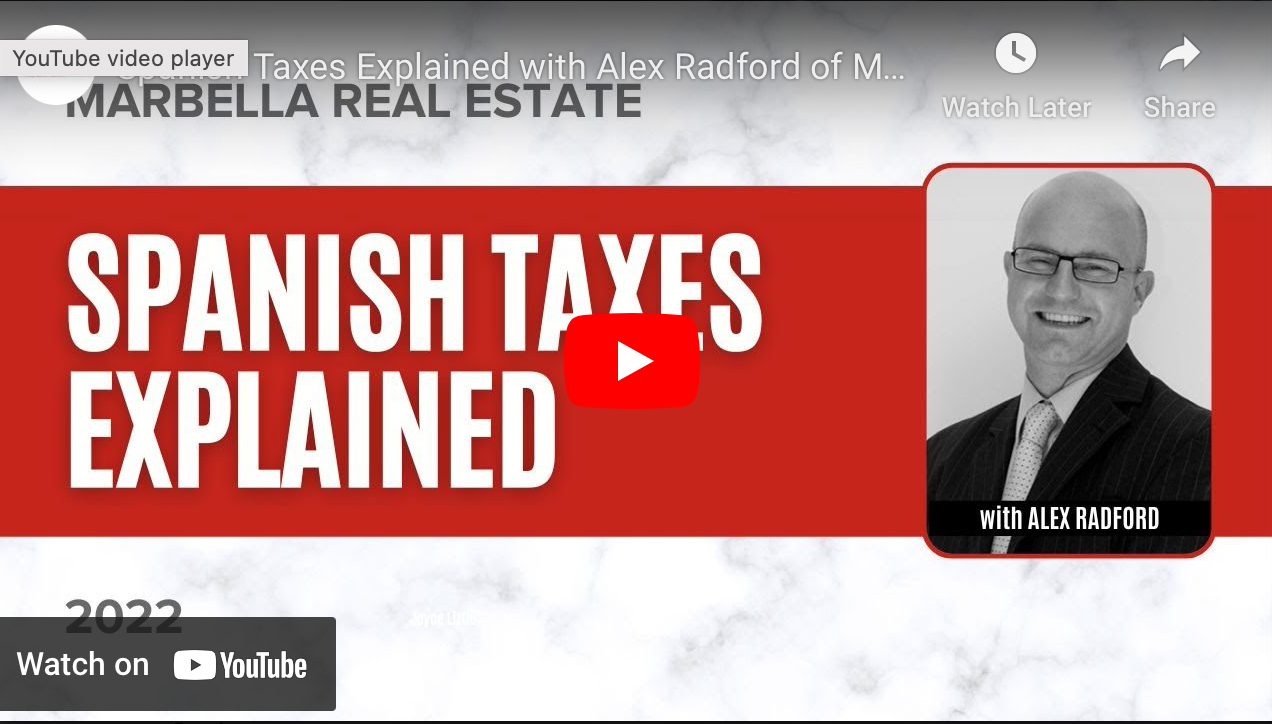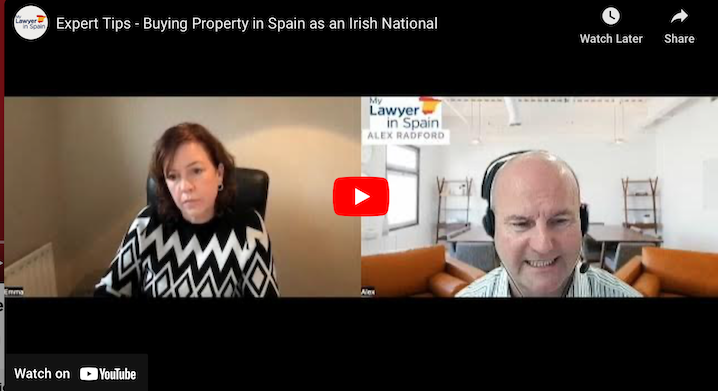Buying a Bank Repossessed Property in Spain
Alex Radford shares his tips on buying a residential property from Solvia, the real estate arm of Banco Sabadell.
Many clients ask if the process for buying a bank repossessed property is the same as buying a property occupied by the vendor. I can confirm the process is the same however there are differences that the prospective buyer should take into account. Just because the property is in the name of a bank, it does not mean you should not employ an independent lawyer who speaks your language to act on your behalf. Below I set out the process that was followed in a recent purchase.
The buyer had viewed many properties and late in the day, the agent suggested viewing a bank repossession. The property had been repossessed about two years earlier and the bank had just dropped the advertised price by 10%. The property fitted the type of property our buyer was looking for. As the price had been dropped there was renewed interest in the property so we had to move quickly.
Our buyer required a mortgage so he obtained an offer in principle and subject to valuation from a lender. This offer in principle had been obtained before the buyer started the property viewings. If you require finance, it is always good to speak to a mortgage broker or bank to find out how much you can borrow before making any offers.
An offer was made for 30% under the asking price and a payment of 500 euros was made to Solvia on a reservation contract provided by Solvia. The buyer submitted all their personal information to the agent and the signed reservation contract, with proof of the 500 euro transfer. About a week later, the offer was rejected and the 500 euros was returned. The buyer pressed the agent to find out from Solvia what price they would accept. Rather than 30% under the asking price, they would accept an offer of 11% under the asking price. A new reservation contract was signed with the updated offer and submitted to Solvia and the sum of 500 euros transferred. The offer was formally accepted and Solvia issued a contract in the name of the buyers. 10% of the purchase was due within 15 days.
At this stage, normally as lawyers we would request and expect to receive the documents set out below. However as the property is owned by a bank, many of these documents cannot be obtained and it is important to take advice on the lack of these documents.
Documents requested:
- land search
- town hall rates for last 4 years
- licence of first occupation
- contact details of administrator for development
- minutes of meetings of community for last 3 years
- water and electric receipts
- inventory
- certificate of no planning breaches
The bank were only able to provide a land search for the property, town hall rates for the year of purchase which had been paid, proof of payment of community fees and contact details of the administrator. Our client visited the property again and managed to obtain from the overflowing post box, copies of water and electric receipts. We contacted the suppliers and luckily, both water and electric were still connected. The buyer also had a useful conversation with the community gardener. Solvia were not prepared to apply for or wait for the certificate of no planning permission breaches from the Town Hall.
The community were glad that someone was buying this property and verbally provided some background information about the property. They could not provide a copy of the licence of first occupation and suggested that we contact the local Town Hall which we did. The Town Hall could not find the licence of first occupation. However the property was not built on protected land and formed part of an established community. It had been built more than 15 years earlier and the property was to be used for residential rather than vacation purposes. Therefore, our client did not insist on the licence of first occupation.
The contract with Solvia stated that all debts for the property would be payable by Solvia and if a mortgage was not granted to the buyer than any monies paid would be returned to the buyer. Solvia however would only pay the debts on the property relating to their period of ownership so it is important to check if there are any other debts prior to when Solvia repossessed the property.
The buyer than instructed their valuer and within 10 days had a valuation which exceeded the asking price and a firm offer to borrow the required purchase monies. The contract for payment of the 10% was duly signed and a date set for completion before a notary 30 days later. Of note is that the buyer decided not to obtain a survey or arrange for the property to be measured.
At completion the bank appointed lawyer signed on behalf of the bank and the keys to the property had been couriered by Solvia to the notary. The buyers attended in person and signed the property purchase deed and mortgage deed before a notary. The lender collected the deed, paid the notary fees and taxes and registered the property in the buyers’ names. The costs of the notary, purchase transfer tax, mortgage tax and admin fees for the lender were deducted from the amount of the loan and the buyer transferred the difference in the purchase price to their new bank account with the lender prior to completion. After the property was registered in the buyers’ names, the buyer collected the property purchase and mortgage deed from the bank. The lender returned to the buyers’ bank account a small difference of the funds retained to register the property and mortgage.
Post completion meeting the buyer informed us of the following:
- The original owner extended the property without planning permission and consent from the community so the house is actually larger than the registered surface on the land search. The Town Hall and Community have not and will not take any action against the owner. A survey would have identified the extra m2. However it is not easy to update the title deed with the extra m2 as the property is on a community of owners. On balance client is happy with extra m2 but would have liked to add the extra m2 to the deeds but accept it is impractical as Solvia would not have agreed to declare extra m2 to the property. Complicated to update deeds now.
- Some of the sinks in the house were being held up with pieces of wood, the underfloor heating machine is out of date and costly to run and the house required more work than originally anticipated. A survey would have identified some of these extras costs that were unanticipated. However given the reduced price obtained for the property, client is happy and all is within budget.
- The house has now been reformed and client is happy with purchase.
Advice to prospective buyers from our client:
“Just because you are buying from a bank, do not cut any corners and always use an independent lawyer who speaks your language. Take a view on some of the legal issues identified by your lawyer and negotiate hard on the price.”
Property first viewed in May 2017 and completion occurred end of July 2017. Works commenced on house and clients moved into reformed house mid November. Electric and water supplies changed over to new owner without any problems. Sometimes if the supplies have been disconnected, electricians and plumbers are required to assist with reconnection.




